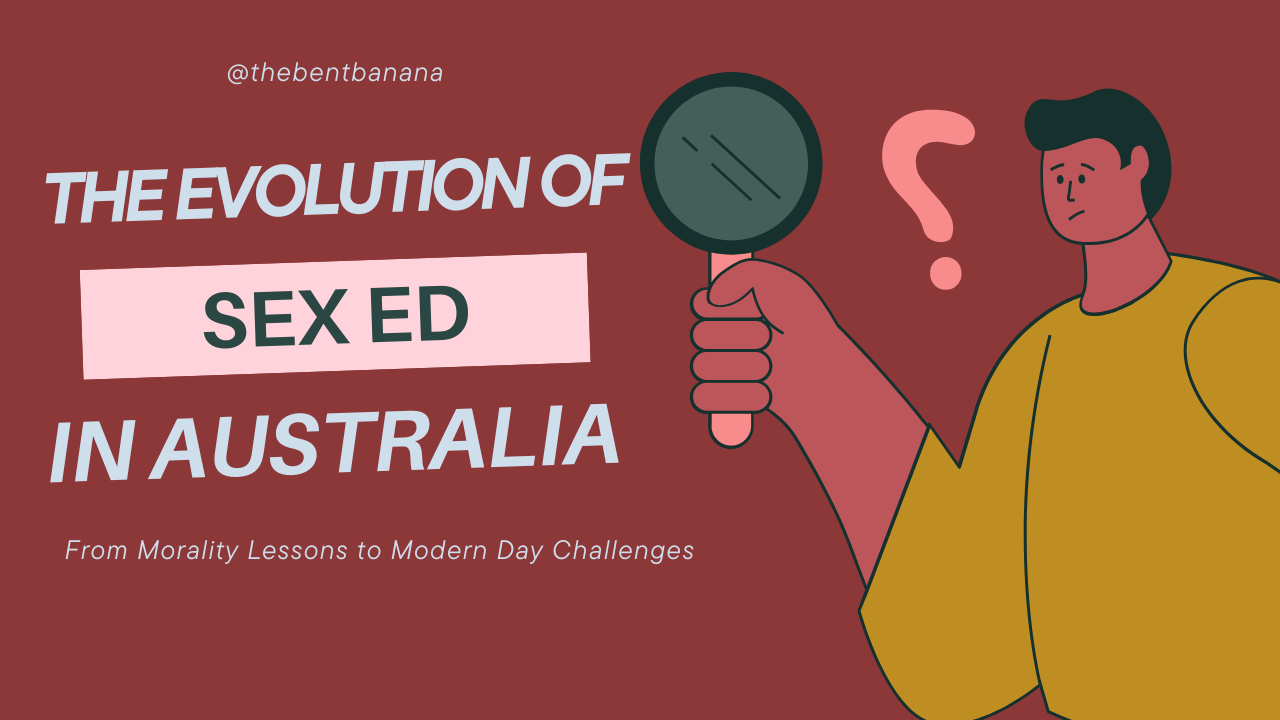Sex education has been part of Australian schools for over a century, yet even today, there’s a lot of uncertainty around what’s being taught and what’s missing.
A History of Morality Over Science
When sex ed was first introduced, it wasn’t about biology, relationships, or pleasure. It was about morality. Thanks to advocacy from groups like the Father and Son Movement and Family Life and Planning, Australian schools began incorporating sex education into their curriculum. But rather than focusing on facts, these lessons pushed self-control, “proper” behaviour, and abstinence-until-marriage, reinforcing shame and stigma around sexuality.
For decades, students learned the mechanics of reproduction, how sperm meets egg, but were left entirely in the dark about intercourse, sexual pleasure, or even the realities of sexual health. Masturbation? It was only mentioned as a supposed moral weakness, something to be “cured” through discipline.
Then, in the late 20th century, everything changed. The introduction of the birth control pill, the sexual revolution, and shifting social attitudes cracked open conversations about sex and relationships. With rising teenage pregnancy rates and the growing impact of sexually transmitted infections (STIs), the need for a health-focused approach became apparent. By the 1980s, stark public health campaigns like Australia’s unforgettable AIDS awareness ads made it impossible to ignore the importance of sex education.
Remember this ad? Watch it here: AIDS Awareness Campaign (1987)
From Fear to Science. But Are We Still Falling Short?
As public health concerns grew, sex education in Australia began shifting toward science-based learning. Medical and scientific facts became central to health promotion, helping to combat fear and misinformation. But despite these advances, we still have a long way to go.
The most considerable debate today isn’t whether sex ed should exist. It’s about what’s being taught and whether students are getting the necessary knowledge.
While sex education is technically mandatory, individual schools have control over how they deliver it. Lessons are shaped by each school’s ethos, values, and community expectations. That means what one student learns in class could vastly differ from what another student learns just a few suburbs away. Many parents have little idea what their kids are being taught (or not taught), and many young people miss out on essential knowledge.
A significant step forward came in 2023 when consent education was mandated in all Australian schools. The curriculum now includes discussions on coercion, gendered stereotypes, and power imbalances, which are essential for fostering healthy, respectful relationships.
But here’s the issue: there’s no standardisation in delivering this content. Schools can still frame these lessons through the lens of their values, meaning students might receive drastically different understandings of consent and relationships depending on where they go to school.
And even when students receive comprehensive sex education (CSE), is it helping them?
A national survey found that only 21% of secondary school students found their sex ed lessons useful. What do they wish they were learning?
🔹 Consent & relationships
🔹 Diverse sexual orientations & gender identities
🔹 STI awareness & contraception
🔹 Navigating digital spaces (sexting, porn, online safety)
So, if today’s curriculum still isn’t covering what young people need, are we truly preparing them for safe, healthy experiences? Or are we just repeating history, just with different blind spots?
Unpacking Sex Ed in Australia: What’s Being Taught?
I’m diving deep into a significant project, breaking down the Australian curriculum to uncover:
✅ What schools are required to teach about sex education
✅ Where the gaps are in current lessons
✅ How we can bridge those gaps with better resources
✅ What young people want to learn
Young people aren’t just asking for more information. They’re asking for the right information. They want to understand consent, relationships, sexual orientation, contraception, and digital literacy. Yet, depending on where they go to school, they may never get access to this knowledge.
So, what’s actually in the curriculum? What’s missing? And how do we ensure all young people receive the education they deserve?
That’s precisely what I’ll be unpacking in this project. If you’ve ever felt like your sex ed experience left you with more questions than answers, stay tuned; we’re about to pull back the curtain on what’s being taught.
What would you have wanted to learn in sex ed that wasn’t covered?
The 2024 SSASH Survey is now open!
The Australian Survey of Secondary Students and Sexual Health (SSASH) is a national study exploring the sexual health and well-being of Australian adolescents. The anonymous survey asks questions about knowledge, behaviour and educational experiences related to sexual health and well-being. The Australian Government Department of Health and Aged Care has funded this survey approximately every 5 years since 1992.
They would love to hear from you if you are between 14 and 18 years old and live in Australia.
